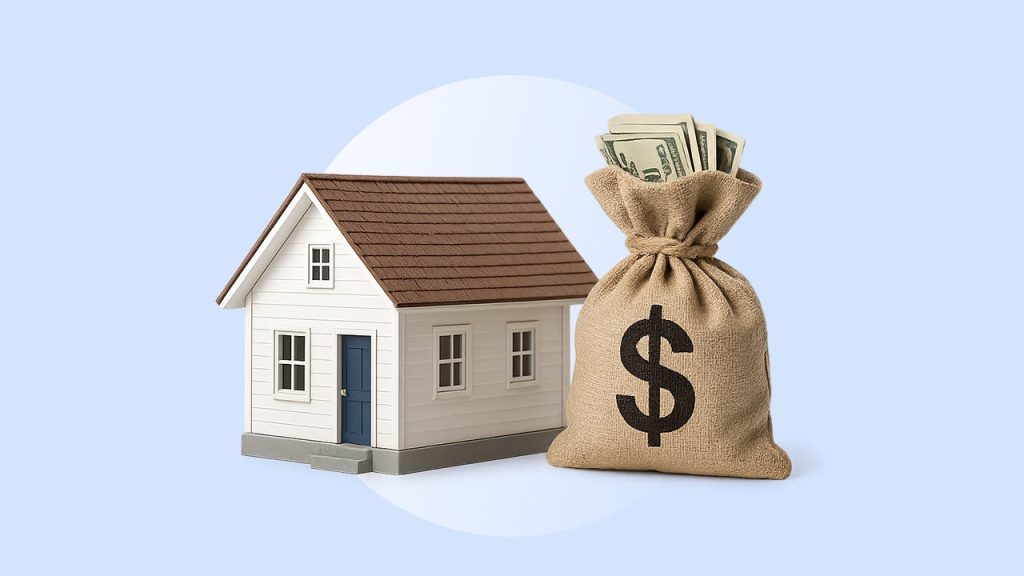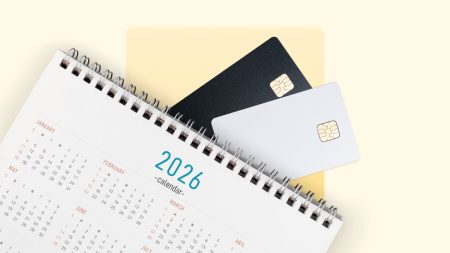Key takeaways
- A HELOC can serve as a reserve emergency fund, allowing homeowners to access funds at their discretion for unexpected expenses.
- HELOCs offer bigger balances, flexibility in terms of borrowing and repayment, and lower interest rates than credit cards or personal loans.
- On the downside, HELOCs come with closing costs and maintenance fees, and a limited period in which to draw funds.
- If establishing an emergency fund HELOC, avoid lenders who impose fees or freezes for inactivity or mandate immediate minimum draws.
A home equity line of credit (HELOC) comes in handy when you need funds for renovations, debt consolidation or – anything, really. But what if you wanted to open a HELOC for no reason in particular? There’s a school of financial thought that recommends you keep a HELOC in reserve for a rainy day. In other words, don’t establish it for a specific purpose, but to hang onto, like a big credit card or an emergency fund, when the need arises.
An intriguing strategy – but, like any tactic, it has advantages and disadvantages. Let’s parse the pros and cons of using a HELOC as an emergency fund.
How using a HELOC as an emergency fund works
Having a HELOC sit dormant but ready for when it may be needed is kind of like having a high-limit credit card tucked away in your back pocket for unanticipated expenses. Truth is, a HELOC works similarly to a credit card. You apply and, once your line of credit has been approved, you can tap it at your discretion, in amounts and on a schedule you choose.
“In some cases, the HELOC underwriter will want a brief explanation about how your funds will be used, even if they are not going to be used right away,” says Jaime Schmidt, sales manager of consumer direct, Cornerstone Servicing, a mortgage servicer. The rationale isn’t binding, however, and you are under no obligation to use available funds immediately (with a couple of exceptions, which we’ll get into below). In fact, “many borrowers open a HELOC and never use it. They just keep it in case an emergency or unexpected expense comes up, and they don’t want to deplete their cash on hand,” Schmidt adds.
“Think of it like a financial safety net,” says personal finance expert Andrew Lokenauth, who personally has used HELOCs as backup emergency funds for years and has helped many clients do the same. “You simply set up your HELOC but don’t draw from it right away,” he explains. “It sits there, ready to use if needed.” It won’t cost you anything, either: There are no minimum payments, since “with a HELOC you only [accrue and] pay interest on what you actually borrow.”
This flexibility is one of the strong selling points of HELOCs over other home equity products or personal loans. By comparison, if you opted for a home equity loan or cash-out refinance loan you’d receive your funds in a lump sum at closing. But then you’d have to start making monthly payments immediately after your loan closes, including interest payments.
Among the advantages of using a HELOC for emergencies or the unexpected, you’ll probably pay a lot less in total interest than you would with a personal loan or if you charged a comparable amount on a credit card. Let’s look at some scenarios.
Example 1: A sudden repair expense
Let’s assume you own a $400,000 home with a $200,000 mortgage, which means you have $200,000 in available equity. You qualify for a $100,000 HELOC (80 percent of your equity, minus what you owe on the mortgage) at an 8 percent variable interest rate. You open the HELOC but keep the balance at zero.
But two years later, your furnace kicks the bucket, costing you $12,000 to replace. You withdraw the funds from your HELOC. During the draw period, you’re only obligated to make interest-only payments on the dollars you borrowed (although you can pay down principal owed if you want to). If you opt for that, you’ll pay about $80 per month for six months ($480 total), during which time you’ll also save to repay the principal. You delay repaying the principal until the 10-year repayment period starts at year five of the HELOC term (and three years after first borrowing the funds).
Your monthly payment over those 10 years will be $145.46 (assuming an average 8 percent rate), totaling $17,455 after 120 months. The total interest paid in this scenario would be $5,935. In contrast, with a credit card charging the average 20 percent interest, you’d have to start paying, at a minimum, $216 monthly right away. Assuming you took the same amount of time (156 months total) to settle the debt, you’d pay $21,761 in interest overall.
Example 2: A job loss
Here’s another scenario: You open a $120,000 HELOC at an 8 percent variable rate. Months later, you’re laid off from work and need to borrow $6,000 per month to cover living expenses.
“In this example, you’ll pay around $40 per month in interest-only payments, which equates to about $200 total,” says Steven Glick, director of mortgage sales for HomeAbroad, a real estate platform. “You use the HELOC to cover all your expenses over five months, but then you land a new job and start repaying the $30,000 [you’ve accrued] beginning in month six, and repay it in total over five years.”
To pay off your principal, you’d pay $608.29 per month over five years, totaling about $36,497. That means your total interest paid from start to finish would be roughly $6,697 (assuming it averaged 8 percent). If you took out a $30,000 five-year personal loan, at the current 12 percent rate, you’d pay $667 per month, and a total of $10,040 in interest — $40,040 in all.
The pros of using a HELOC as an emergency fund
There are several advantages to setting up a HELOC as a reserve fund instead of a savings or investment account, and using it over credit cards or other loans.
- Fast access. Similar to mortgages, HELOCS can take several weeks to obtain, so establishing one in advance saves time if you’ve got a sudden need. “You’ll have immediate access to cash in an emergency without having to liquidate assets that may be taxable or earning a market return,” notes Travis Erickson, a Mesa, AZ mortgage broker with Bonelli Financial Group.
- Larger limits. Because you’re borrowing against your home, using it as collateral, HELOCs can be a rich source of significant cash (serious five or even six figures). How easy is it to get a credit card with a $50K limit?
- Cheaper debt. As secured debt, HELOCs have much lower interest rates (again, akin to mortgages) than credit cards or personal loans. “My HELOC rate is around 7.5 percent, while credit cards typically charge 20 percent or higher,” Lokenauth says.
- Flexible borrowing. How much to draw, when to draw it, and when to repay it are all pretty much up to the borrower.
- No impact on your credit. Your credit score may drop slightly for a short period after applying, but not using a HELOC shouldn’t negatively affect your credit history or report.
The cons of using a HELOC as an emergency fund
Of course, there are some downsides to this strategy too.
- Time sensitivity. The HELOC will only be good to use as long as the draw period lasts – a decade at most. You can’t borrow once the repayment period begins.
- Fees could apply. You’ll probably have to pay closing costs to establish the HELOC, which can be as much as 5 percent of the credit line. Many carry maintenance fees that can range from $50 to $100 a year. Some lenders may even charge an inactivity fee.
- Use it or lose it. Some lenders may opt to decrease, suspend or shut down your line of credit if 18 to 24 months pass with no draws. Also, if there’s a big market downturn and home values drop, lenders often have the option to freeze or reduce your credit line, which we saw happen in 2008,” Erickson cautions.
- Unpredictable payments. Most HELOCs charge a variable interest rate. That means that, once you do start drawing funds, your repayment amounts can fluctuate over time.
- Your home is at risk. HELOCs are a serious commitment. You’re pledging your home as collateral. So if you don’t make your payments as promised, you could lose it.
How to find the right “reserve” HELOC
It’s always important to comparison-shop when you’re in the market for a HELOC. “Try to compare at least three to four different lenders,” Lokenauth says. “I’ve found that local credit unions often provide the best deals.”
But for an emergency fund HELOC, you want to pay special attention to the terms. Aim to pick a lender that charges no annual maintenance fees or inactivity fees, and that allows interest-only minimum payments. “This may result in a slightly higher rate, but it’s worth it if you’re not sure your HELOC will ever be used,” says Erickson. He also advises opting for the longest draw period possible, lest you fall into the Murphy’s Law trap of it ending right when your need arises.
You can always try refinancing your HELOC as the draw period ends, to make funds accessible once more.
Obviously, you’ll want to avoid lenders that require an initial draw. Also, look for a generous credit limit. “Target a credit line that would cover $50,000 to $100,000,” Glick recommends – though, of course, how big a HELOC you can get will depend on the size of your equity stake and mortgage balance, your creditworthiness, and your home’s appraised value.
Also, check the fine print carefully for credit line reduction or freeze clauses – particularly as pertains to HELOC inactivity. “And make sure your loan officer takes the time to explain all the details of the line of credit, so that you can be fully informed before making a decision,” Erickson adds.
Who’s best suited to use a HELOC as an emergency fund?
It can make good sense to open a HELOC that you only plan to use in a pinch – so long as you’re aware of the risks involved and can afford the associated expenses. Good candidates for HELOCs in general tend to have strong financials (high credit scores), steady incomes, and little debt. In particular, they have paid down much of their mortgage, and so have built up a sizable equity stake to draw upon.
“But remember that it could be much harder and take longer to get approved for a HELOC when you actually need the money quickly,” says Lokenauth. “So consider setting one up when times are good.”
Why we ask for feedback
Your feedback helps us improve our content and services. It takes less than a minute to
complete.
Your responses are anonymous and will only be used for improving our website.
Help us improve our content
Read the full article here









